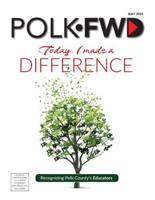Several readers took me to task when I wrote in a previous column that small business is not being treated fairly.
I said large corporations have a top tax rate of 21 percent, and small businesses have a top tax rate of 40.8 percent.
These readers said while what I said may be true, the tax code isn’t as simple as I made it out to be.
“What motivates me to write this letter is Mr. Dunn-Rankin's apparent misunderstanding of progressive taxation and his apples/oranges comparison of large corporation taxation vs small company taxation. First let me make it absolutely clear that Mr. Dunn-Rankin does not pay 40.8% of his net income to the IRS. His contention that he does pay that much is very misleading.” W.
And there was this one.
“With all due respect, if the owners of your newspapers are paying a 40.8% Federal tax rate on their business income (as your article implies), your owners really need to seek better tax advisors!” R.
Thank you R., W., and to the other readers who pointed out that I had dramatically oversimplified the tax code in my column. We have the smartest newspaper readers in America. You are right that I created an oversimplification when I wrote that larger corporations have a top tax rate of 21 percent and small businesses have a top tax rate of 40.8 percent.
The IRS tax code passed by Congress is about 2,600 pages and the IRS regulations created to explain what Congress actually meant is another 14,100 pages. The tax code is big and complex. I did indeed simplify to make a point: Washington, D.C., is for sale — but only large corporations are allowed to get the best deals.
While the maximum tax rate is 21 percent for large corporations, most large businesses use the tax law complexity they helped craft with their congressmen and senators to have effective tax rates far lower than 21 percent.
Google used something called the “Double Irish, Dutch Sandwich” to reduce its domestic taxable income by $23 billion in 2017. Oversimplifying again, what they did was take their name and intellectual property created in the U.S. and move it to a post office box company offshore. The shell company then charged the U.S. parent company $23 billion to use the name and intellectual property created in the USA, reducing domestic taxable income by $23 billion.
Using techniques like this means the effective tax rate for publicly traded companies is just 15 percent. If you are an individual, you start paying more than 21 percent on your income once you have more than $40,000 in taxable income. Is it really fair that our largest companies pay a lower tax rate than an individual with just $40,000 in income?
Large businesses have partnered with their friends in D.C. to tilt the playing field in the favor of big business. That’s one reason why we have fewer small businesses than we used to have. I did oversimplify the amazingly large and complex tax code in my prior column.
And, a warning to readers: I may oversimplify complex subjects in the future. It’s hard to explain complex subjects like the tax code in less than 700 words.
A small-town newspaper, or residents of that small town, can’t change the tax law – but we can make a difference. We can shop local and give our small businesses a fighting chance.
Share your thoughts.
—
David Dunn-Rankin is CEO of D-R Media, which owns the Four Corners News-Sun, Winter Haven Sun and Polk News-Sun in Polk County, as well as newspapers in Highlands, Lake and Sumter counties. He can be reached at david@d-r.media.




















